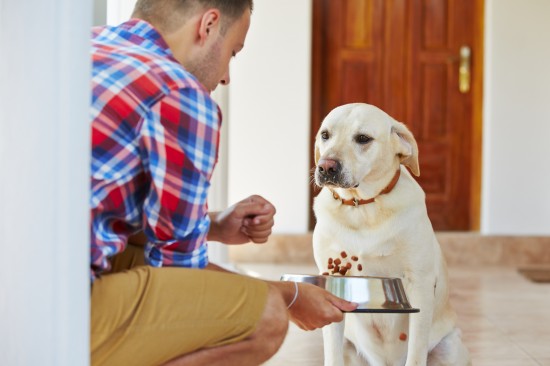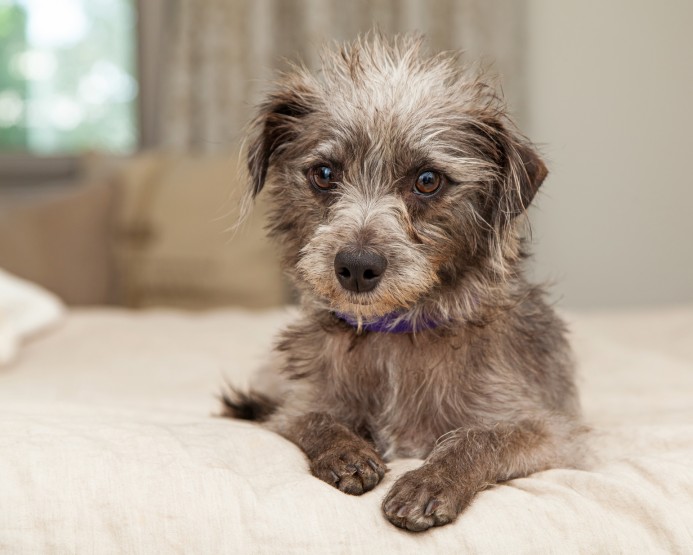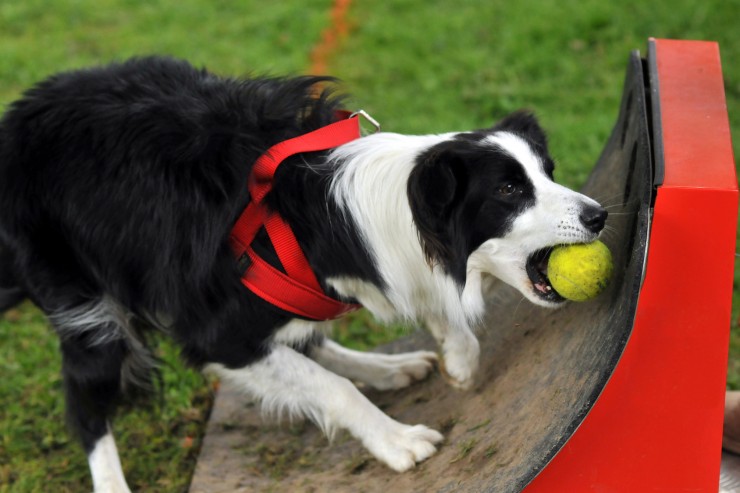
A crate might look like a mini jail cell to you, but to a puppy that has been trained the right way since young, it is your dog抯 natural den ?a personal space where he抣l feel secure and comfortable. This article reveals simple yet effective tips on how you can crate train your dog fast and easily.
Many people see dogs being locked in crates as inhumane and cruel. They just don't understand why dogs should be kept under lock. But to an experienced dog owner, crate training is essential for every dog out there. Done the right way, it keeps the dog secure, safe and at ease. It is also one of the smartest way to potty train your dog.
Getting the Right Crate Size - An ideal dog training crate should be large enough to allow your dog to stretch out without hitting his head and allow him to be able to turn around easily. The crate is too big if your dog can relieve himself in one corner and move to play and sleep in another. If your puppy is still young and not fully grown, try to block off certain section of the crate with cardboard or wooden boards.
Critical Crate Training Rules - You must introduce the crate slowly to your dog when you begin crate training. Crate him in short intervals, about 10 minutes, and gradually increase the duration over time. All dogs need some time to get used to staying in the crate. Never crate him for more than 30 minutes or longer the first time you put him into the crate.
It is not advisable to crate a young puppy for long periods of time. Your puppy should have the chance to exercise and urinate before being crated. Dogs are fastidious creatures and have no desire to soil the surroundings of their private spaces. However, he might be forced to relieve himself if you cruelly lock him in for longer than he can hold it in.
A rule of thumb to gauge how long your puppy should be in his crate is to add an hour to his age in months. For example, a puppy who is two months old must not be left in a crate in excess of three hours.
It's common for pups to bark and moan to attract your attention while in the crate. If these things happen during crate training, do not give him any attention! Yes! Do not even look in his direction.
Dogs are intelligent animals. Don't let him know that he'll get your attention when he kicks up a fuss. Simply ignore him. Praise your dog or let him out only when he settles down.
If it's a young puppy whom you've just introduce the crate to, maybe you can offer him a treat in the crate to calm him down. Whatever you do, don't let him out of the crate at that very moment.
If you notice that your dog displays hyper active behavior as compared to before, you might be crating him for too long. If your dog starts to chew on himself, let him out immediately and consult a trainer or behaviorist.
Below are some suggestions and tips to aid you in crate training your puppy:
1. To make it easier for your pup to accept his crate, play with him there, or spent time near the crate doing whatever you like, reading or playing video games while he is busy playing with his new toy. If he is there all by himself, he begins to associate the area with isolation and may resist being there at all.
2. Start crate training at the start of dinner. Give him his food, one piece at a time, by throwing bits of kibble in to the crate and making him search for it. This is one way of making it fun during his training.
3. If you pick up his toys, place them in the crate, so that when he returns he can play with them. To surprise him, you can even hide a biscuit in the crate ?that's fun!
4. It is not advisable to keep him in the crate for long periods until he is pressured to relieve himself. If you are gone for long periods each day, you should consider a larger confinement area such as an exercise pen or a small room.
5. The best place to place the crate would be where your puppy can see the environment and family members, hear and smell you, the owner.
6. Never use a crate to punish your dog, it will backfire. If you introduce the crate to him in a fun way, your pup will take to crate confinement quickly and without much fuss. It is meant to be a comfortable and safe space, not where he'll get punished.
7. Crate training is not a long term solution to keeping your dog safe without supervision. Pups must not be left in crates alone for long period of time. Your training duration will be affected greatly if you crate him for too long and he urinate in the crate.
In sum, crate training is a necessary training tool when instilling obedience. Its main purpose is to provide security, safety, reduce potentially destructive behaviors, add to the ease of traveling and protection for short term confinement, whenever the owner needs it. It is a vital lesson that all pups should pick up since young.
 Why Its Bad To Feed Table Scraps To Your Cat
Why Its Bad To Fe
Why Its Bad To Feed Table Scraps To Your Cat
Why Its Bad To Fe
 The Cat’s Whiskers !
The Cat’s Whisker
The Cat’s Whiskers !
The Cat’s Whisker
 10 Tips To Entice Discerning Dogs To Eat
10 Tips To Entice
10 Tips To Entice Discerning Dogs To Eat
10 Tips To Entice
 All Dogs Are Gorgeous Whether They Are Pedigree Or Mixed Breeds
All Dogs Are Gorg
All Dogs Are Gorgeous Whether They Are Pedigree Or Mixed Breeds
All Dogs Are Gorg
 Teaching Your Dog The Basics Of Flyball
Teaching Your Dog
Teaching Your Dog The Basics Of Flyball
Teaching Your Dog
Copyright © 2005-2016 Pet Information All Rights Reserved
Contact us: www162date@outlook.com